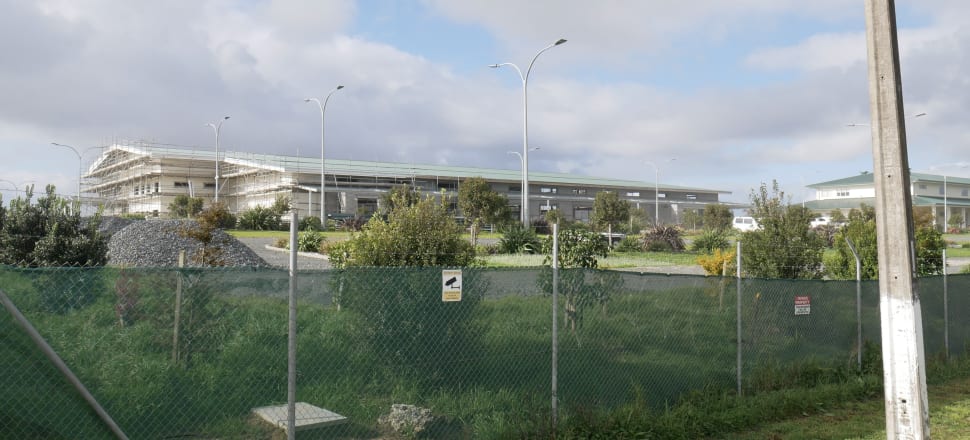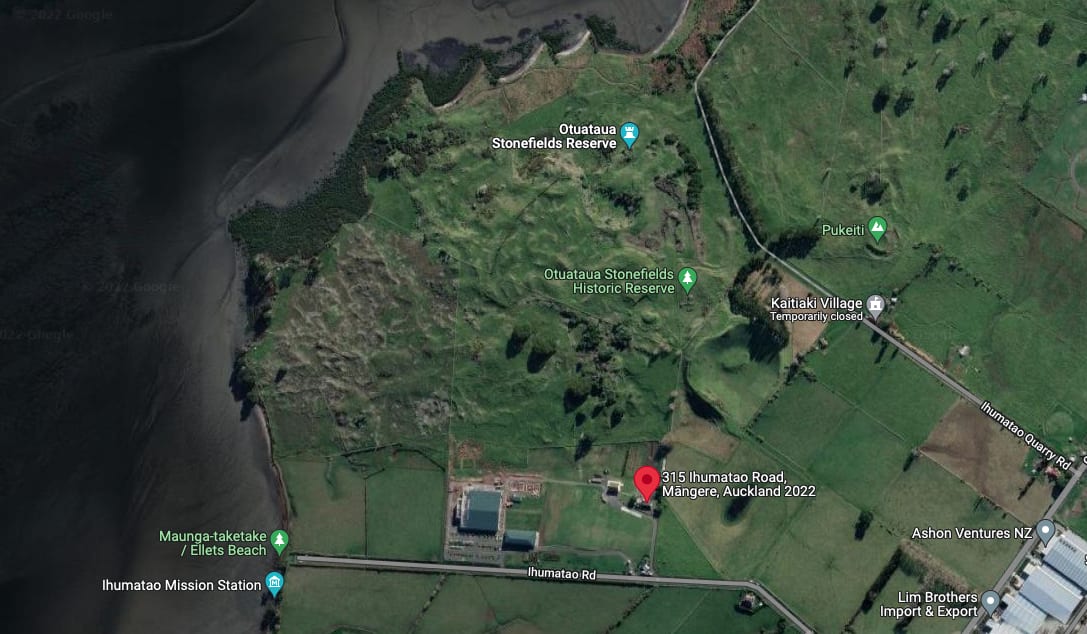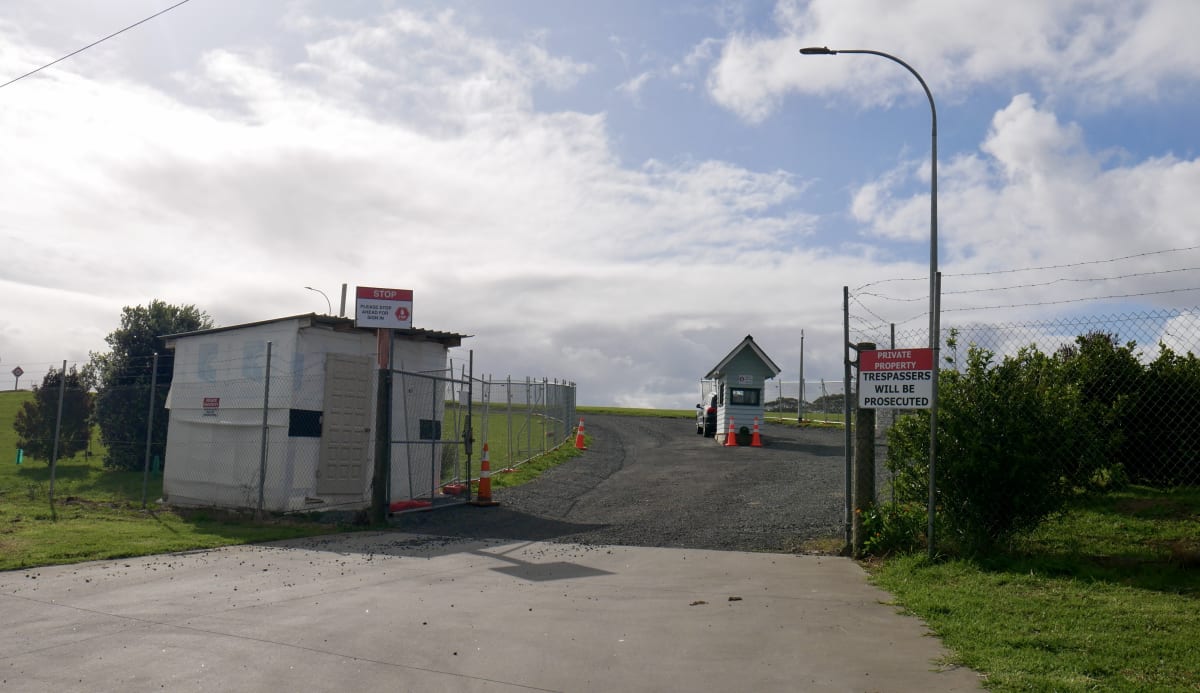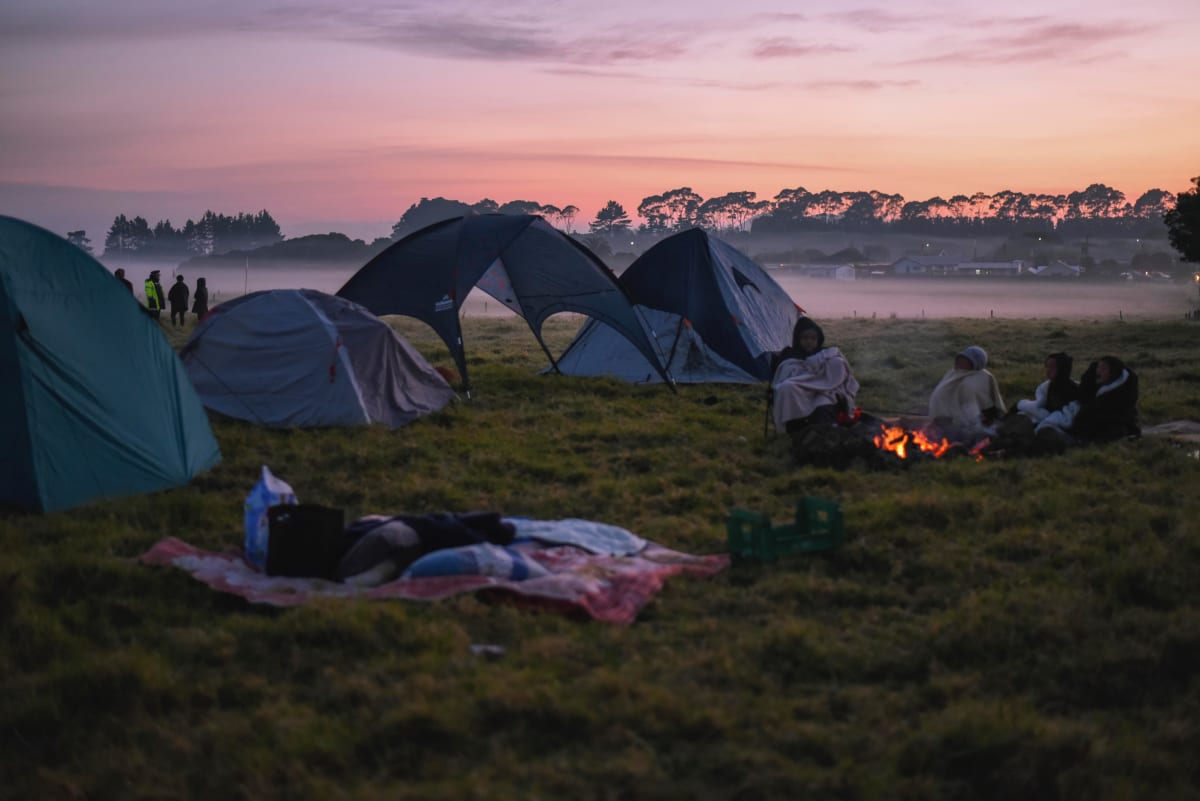
Followers of a religious sect are setting up shop on sacred land in South Auckland
A multi-million-dollar centre for worshippers of a controversial guru is taking shape in a sacred and historic part of Auckland - all funded through donations and volunteer hours.
The 7000 square metre Science of the Soul Study Centre sits just east of Manukau Harbour in Māngere, among the distinctive stone walls of the historic Ōtuataua Stonefields Historic Reserve, locus of the Ihumātao occupation and controversial - and eventually scrapped - Fletcher housing development.
Science of the Soul is the name of the board that oversees the running of the premises for followers of Radha Soami Satsang Beas NZ (RSSB NZ), a religious sect with roots in India. Members worship a guru, considered a spiritual leader in human form.
A large main hall will cater for events and meditation sessions, and will open out onto a courtyard flanked by a north and south block. The blocks will contain a library, dormitory, kitchen, creche and a ‘family area’. Construction on the south block is finished, and work on the north block and main hall are expected to wrap up by the middle of next year. The centre will max out at a capacity of 500, have its own onsite wastewater disposal system and landscaping works, and 163 carparks.
Right now, the place is far from bustling, the only discernible movement the odd high vis vest wandering in and out of view. The property is well fenced off with barbed wire and signs warning people they are on camera. The driveway is manned by a security shack of sorts.
RSSB NZ leases the nine-hectare piece of land from Assembly Lease Limited, itself made up of members of the organisation and which bought the land in 2012 for $3.5 million. A CoreLogic valuation done last year put the land at $19.45 million.
Newsroom understands the development is entirely funded through donations and volunteer work.

The project has enjoyed support from local iwi and hapū, with whom the group worked closely in the consent process, particularly Te Ākitai Waiohua, Te Kawerau a Maki and the nearby Makaurau Marae.
RSSB NZ, which has a sparse presence online and few listed contacts, is moving from its existing premises in Hillsborough, largely to accommodate events and a growing membership. Member Baruch ter Wal says RSSB members believe that through meditation “it is possible to realise the presence of God within themselves”.
“Members commit themselves to a way of life that supports spiritual growth while carrying out their responsibilities to family, friends and society.”
This way of life includes vegetarianism, abstaining from alcohol and drugs, and the expectation members will lead a life of high moral values. Inherent to the philosophy is 'seva', meaning selfless service, or voluntarism.
Since its establishment in India in 1891, the group has spread to more than 90 countries. RSSB has had a presence in New Zealand since the 1960s, when Eastern spirituality began to get traction in the West. Local membership has grown from fewer than 50 in that decade or so to around 1000 now.
Gurinder Singh Dhillon, the India-based head of RSSB since 1990, is considered by his followers to be a spiritual guide in human form.
Reviews on the RSSB NZ website about the centre in Hillsborough are largely positive, but range from: “If there is heaven on earth then u should go for this” (sic) and “Always a good experience and get a chance to listen inner voice”, (sic) to “This is a literal cult.”
Asked about the use of the word cult, ter Wal says it’s an inevitable question.
“When you’re taking guidance from someone, that always starts to ring alarm bells ... the fact that no one makes any money, no one is expected to behave in certain ways ... it’s just a very different thing. With a cult, you’re always seeing ‘What’s in it for that person?’"
There’s a perception, he says, that finally seems to be changing, that following a rigorous lifestyle is strange, but the increasing popularity of vegan lifestyles and meditation has helped nudge it into the mainstream. Even the word guru, which previously would have pinned followers as “weirdos”, is commonplace now.
The group doesn't seek publicity, or engage in recruiting or marketing.
“People find us.”

In terms of getting consent for the centre, ter Wal says consultations with local iwi and hapū helped get the green light. No such permission would have been given for a regular housing development given the environmental impacts and cultural significance of the land.
“It’s quite an undeveloped piece of land still, and that was part of the whole thing that a use of that land at that time, council would only really countenance something low-intensity, as opposed to what we saw happen with the Fletcher’s piece [of land].
“Kaumātua drew on oral traditions to guide us as to the best location on the site to build - meaning the location least likely to disturb sites that should be left untouched.”
Land at Ihumātao, of which Ōtuataua Stonefields Historic Reserve is a part, was confiscated by the Crown when it invaded the Waikato in 1863. The land was then sold to private owners and ultimately ended up in the hands of Fletcher Building. Mana whenua activists opposed the sale and began peacefully occupying the site in 2016. When they were served an eviction notice in July 2019, the issue made headlines around the country. The Government ended up stepping in and buying the land for just under $30 million.
A cultural impact assessment done by local iwi Te Ākitai Waiohua in 2018 said it was not against development on RSSB's land, which was not part of the land owned by Fletcher's, but borders Stonefields on the north (remnants of the reserve even spill into that portion of the property), but many of the natural resources of the area have been seriously depleted in the name of progress and have led to a degree of caution and apprehension.
The Manukau Harbour in particular has suffered repeated environmental degradation thanks to projects including stormwater, a piggery, farmland and the discharge of raw sewage into its waters. The effects of development have been social too. When Auckland Airport was built in the 1950s, new zoning restrictions meant many buildings in the area could not legally be maintained. One of those buildings was Pūkaki Marae; the changes saw the local community of Te Ākitai Waiohua pushed out.
“The Ōtuataua Stonefields remain as one of the last enduring (relatively) unmodified examples of Te Ākitai Waiohua history in the region and, as kaitiaki, the tribe has a duty to protect it.”

Te Ākitai Waiohua wanted to see the "application of the seven Te Aranga principles" to the project, which in essence it supported. The principles being: the ongoing participation of Te Ākitai Waiohua in all phases of the project; acknowledgement of the area’s history; iwi monitoring for all topsoil removal; the incorporation of iwi design; and the preservation of the long-term cultural and natural landscape - with a strong recommendation for eco-sourced native plants.
An assessment done in 2013 by Te Kawerau Iwi Tribal Authority pointed out the proposal might even enhance iwi wellbeing by improving access to the land (which was not accessible at that time). That assessment also supported the project and set out conditions for its development.
In accordance with RSSB’s service ethos, volunteers are taking care of a large chunk of the construction and landscaping work themselves.
Also working on a volunteer basis is Queenstown-based architecture firm Andesite Architects Ltd.
Firm director Swee Ngee Low worked free of charge on the concept design during the resource consent stage. Now the project has been given the go-ahead, Low has stepped back as building consent and construction work is delegated to external consultants - whom will be paid in donations to RSSB.
Asked why she didn’t charge for her time, she says: “I do it for love. For the people. For the community. To be able to volunteer my time and skills for the community to design a space to create the atmosphere of love and meditation among mankind is a privilege. No matter what religious background or outlook in life, we are all the same within. Love comes from within. At the end of the day, only love matters.”
However, the group is not without its controversies.
While RSSB’s previous gurus have maintained a low profile, Singh Dhillon has made the news in India for allegations about his involvement in financial scandal.
Singh Dhillon is alleged to have siphoned funds relating to the sale of multinational pharmaceutical company Ranbaxy Laboratories - owned by Singh Dhillon’s cousins, brothers Malvinder and Shivinder Singh - to Japanese global healthcare company Daiichi Sankyo in 2008.
An affidavit signed by Malvinder Singh in 2019 accused Shivinder of transferring Singh Dhillon more than NZD$100 million in fraudulent loans through shell companies controlled by Singh Dhillon, his family and close associates, money which was then used to buy real estate.
“Shivinder initiated these actions and permitted siphoning and malfeasance of funds with the ulterior motive of gaining control of the seat of the spiritual head of RSSB, which was promised to him by Dhillon in lieu of the financial gains,” the complaint says.
He alleged any attempts at recovering the money were met with death threats.
“Gurinder Singh Dhillon has threatened the complainant through his lawyer Ferida Chopra that if he did not agree to the demands of Gurinder Singh Dhillon, he would be eliminated by persons from the Radha Soami Satsang,” the complaint said.
The Economic Offenses Wing of the Delhi Police summoned Singh Dhillon to court seeking explanation around funds transferred to his and his late wife's bank accounts following the accusations from Malvinder.
Singh Dhillon and his family members were among 55 people eventually ordered by the Delhi High Court in 2019 to repay 6,000 crore rupees - or nearly NZD$1.3 billion - to the Singh brothers’ flagship holding company RHC Holding as part of a directive to third parties to compensate Daiichi, which alleged non-disclosure of crucial information during the 2008 sale.

Asked how RSSB might reconcile these allegations with its principles, Baruch ter Wal says the group doesn’t feel it needs to respond given no charges against Gurinder Singh Dhillon have been laid.
US-based author Brian Hines was a member of RSSB for 35 years. Since leaving in 2002 he has become an outspoken critic, particularly about what he sees as hypocrisy within the leadership.
He describes RSSB as “stranger than your usual religion”, drawing on a study by American psychiatrist and former Harvard Medical School teacher Robert Jay Lifton to make his point. Namely, that the outfit fits the bill for the three criteria Lifton defines as making a cult: a charismatic leader followers must not question; ‘thought reform’ or indoctrination; and exploitation of members.
“Followers of RSSB believe their leader is a living god. He’s considered an infallible being and his commands are to be carried out without question.”
Doubts about teachings are heavily discouraged and followers are told the human mind is considered to be “the agent of a negative power”, he says.
Hines also says devotees are expected to commit vast amounts of time, energy and money - though this is not enforced - to the organisation, which operates strictly as a top-down hierarchy.
Ter Wal says members are not encouraged to donate, and while they are made aware of opportunities to volunteer, that too is optional. He also says the nature of RSSB’s way of life can lead to retrospective negativity.
“The lifestyle is quite rigorous, so if you become disillusioned, you could look back at 10 years and go ‘Oh shit, I wasted 10 years of my life, I could have been out there earning money and watching Andrew Tate videos’. And so you could get resentful about that, and feel like ‘I was brainwashed’ so the teachings are the teachings and if you fall out of love with them then you could say it was groupthink ... which comes with the territory.”







